March 2017 bought an unwelcome visitor to the Whitsundays in the form of Cyclone Debbie. Cyclone Debbie unfortunately caused significant damage to the region both above and below the water. Whilst protected bays remained relatively unscathed, some of the North facing bays experienced damage to the fringing coral reefs. This project, the first of its kind on the Great Barrier Reef, was implemented to aid recovery in some of those heavily effected bays. Coral restoration isn’t believed to be a solution to the stresses on the reef, however in small localised areas, it can make significant improvements to the diversity and abundance of marine life.
Whitsunday Coral Restoration Project Background
In November 2018 Reef Ecologic successfully established both table and rope coral nurseries in 2 locations within the Whitsundays.
Starting with only 4 nurseries, 357 coral colonies were successfully outplanted from the nurseries to the sea floor during 2019. With additional funding from The Great Barrier Reef Foundation and a research permit from the Great Barrier Reef Marine Park, this project has grown significantly. The Whitsundays is now home to 14 nurseries across the 2 sites. As of February 2020, there are approximately 1427 surviving coral colonies across these structures. Ocean Rafting teamed up with Reef Ecologic to help outplant 621 corals during June 2020, contributing to the near 2000 colonies successfully outplanted since this program begun.
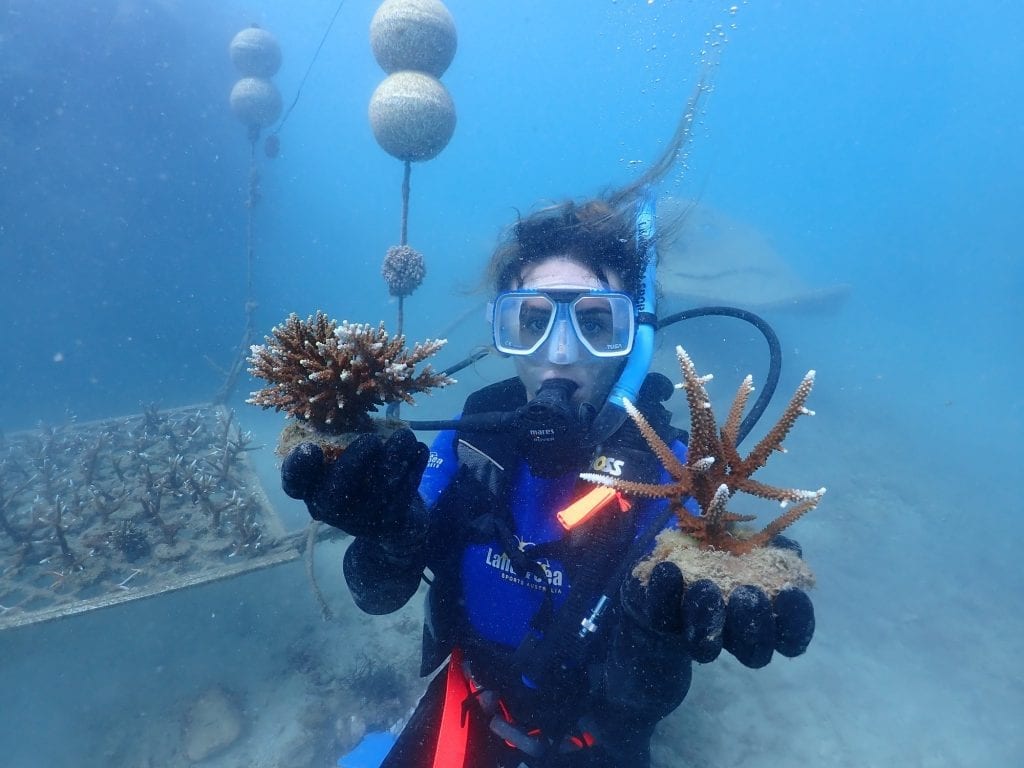
Coral Restoration Method
Coral Restoration is a relatively new science on the Great Barrier Reef. The team at Reef Ecologic have used a variety of methods that have been successful on other reefs in other parts of the world. By using different methods, the team hopes to identify which techniques are most successful to help with future projects.
Step 1 – Where do the corals come from?
The corals collected for the nurseries were taken from 2 locations that were identified as having a highly diverse reef system. The corals are classified as either donor corals or corals of opportunity depending on how they were collected. Donor corals are corals that were broken off a living reef. These fragments are taken from areas that are high in coral coverage and are monitored to ensure that the corals regrow successfully. Opportunity corals are corals that have broken away naturally, perhaps from extreme weather or larger fish species. These corals are still living but are not fastened to the seabed. By trialling these different methods, Reef Ecologic hopes to establish the most successful and sustainable method.
Step 2 – The Coral Nurseries
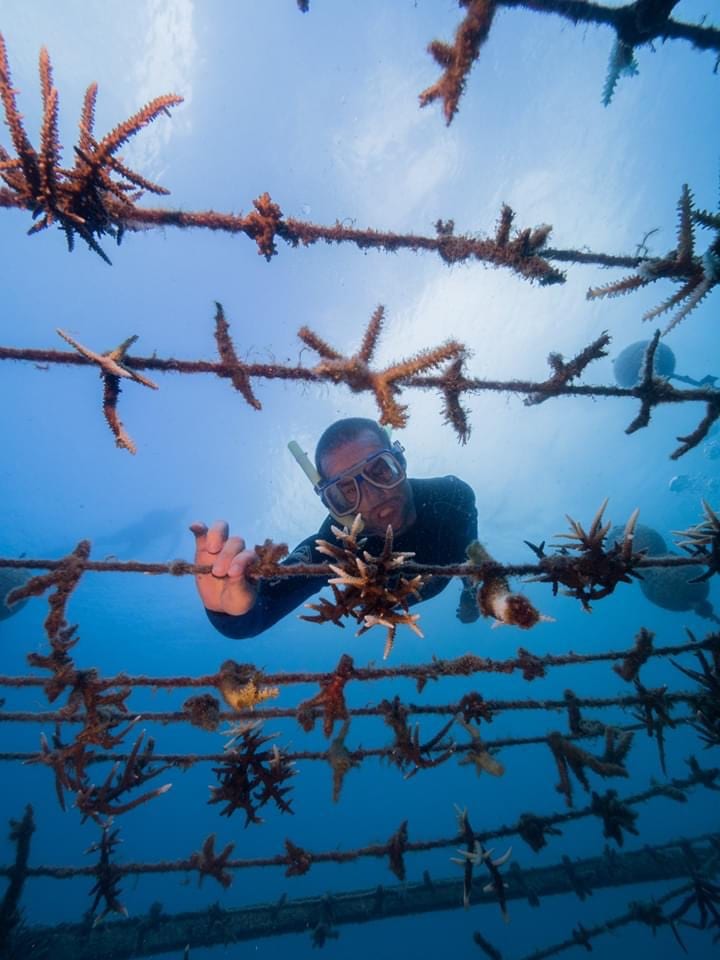
The collected corals are then attached to the nurseries. The rope nurseries are suspended from the structures, with the corals intertwined within the strands of the ropes. The ropes are made from a biodegradable material so that the corals will grow around the rope, which in time will eventually break down.
Skipper Braden checking out a rope nursery in Mantaray Bay. Photo – Grumpy Turtle Creative
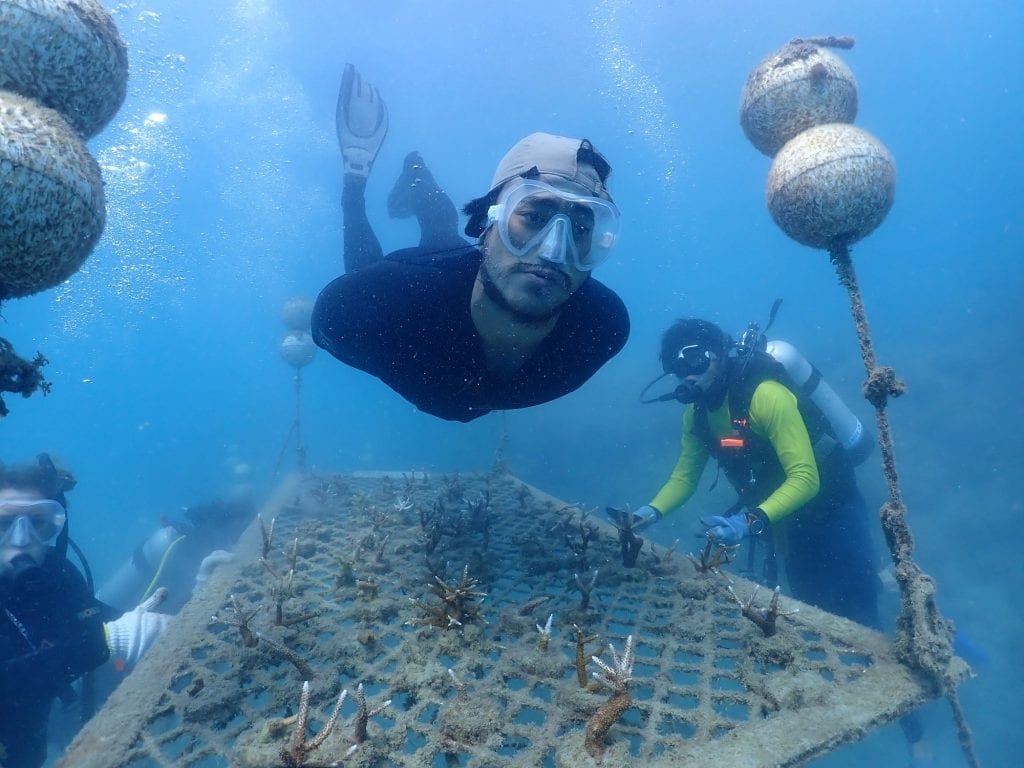
The table nurseries hold the fragments on small concrete disks. The coral colonies are secured to the disks with either a silicon or concrete mix. Once again it is expected that the corals will grow around these structures.
Eco Host – Thomas (Middle) and Master Reef Guide – Taylor (Yellow) inspecting a Table Nursery in Mantaray Bay. Photo – Gemma Molinaro Photography (Reef Ecologic)
Step 3 – Outplanting
Once the corals have grown to a suitable size they can be taken from the nurseries and outplanted onto the seabed. The general survival rate of the corals on these nurseries has been about 75%. Those that do survive can be moved onto the seafloor.
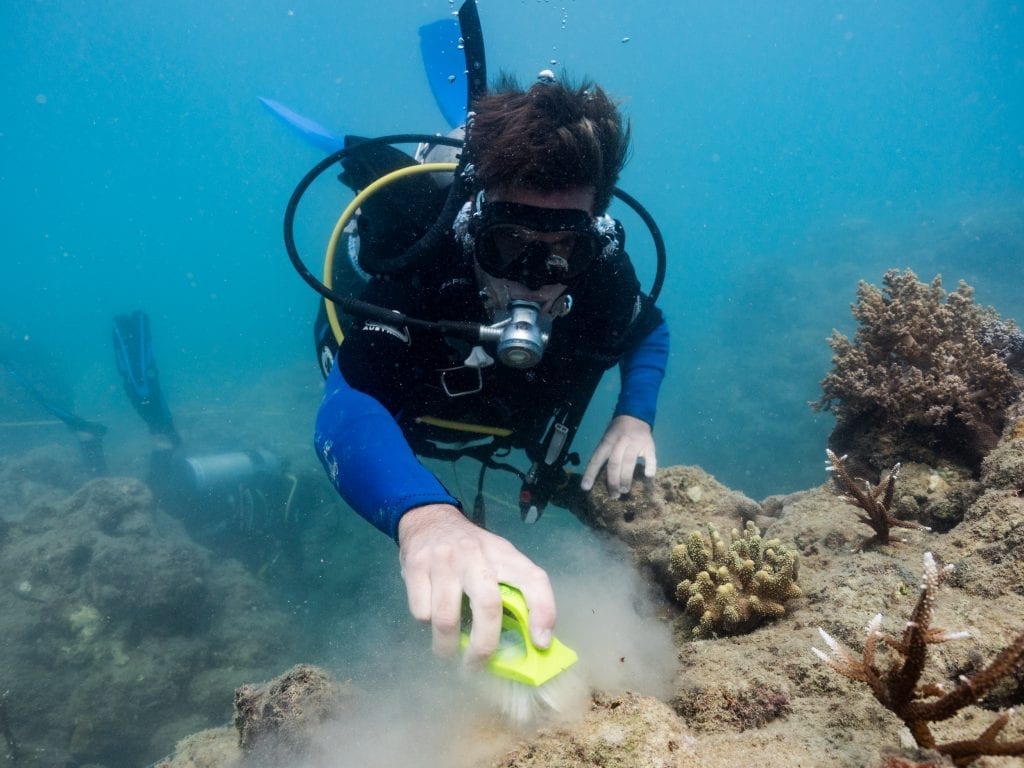
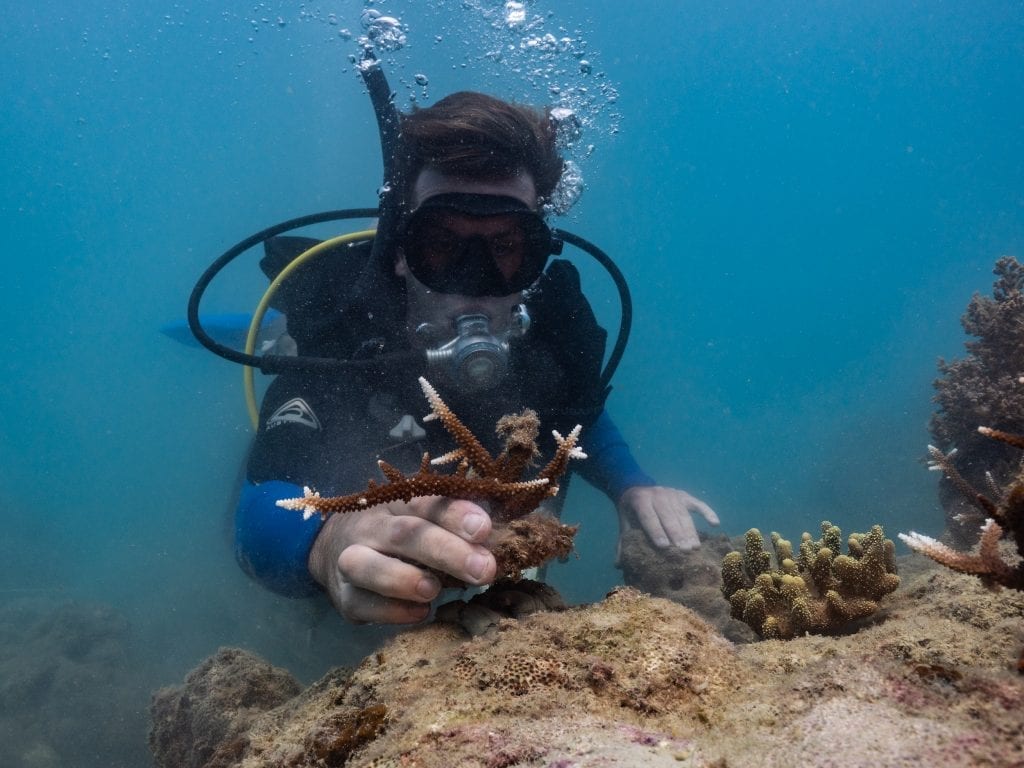
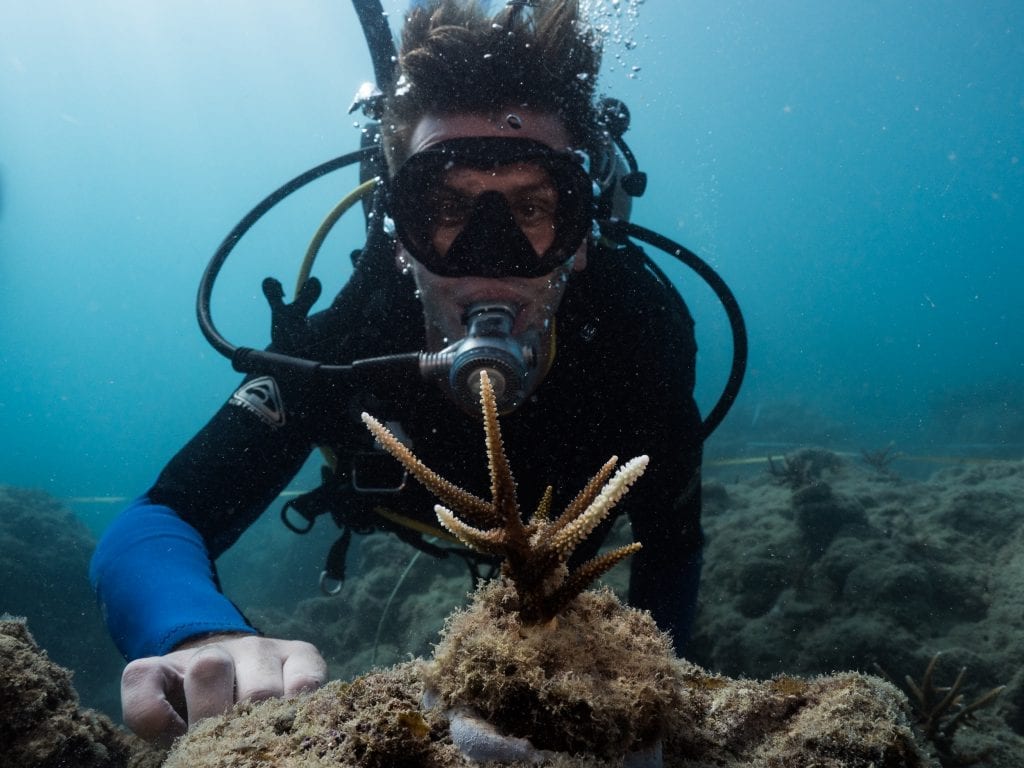
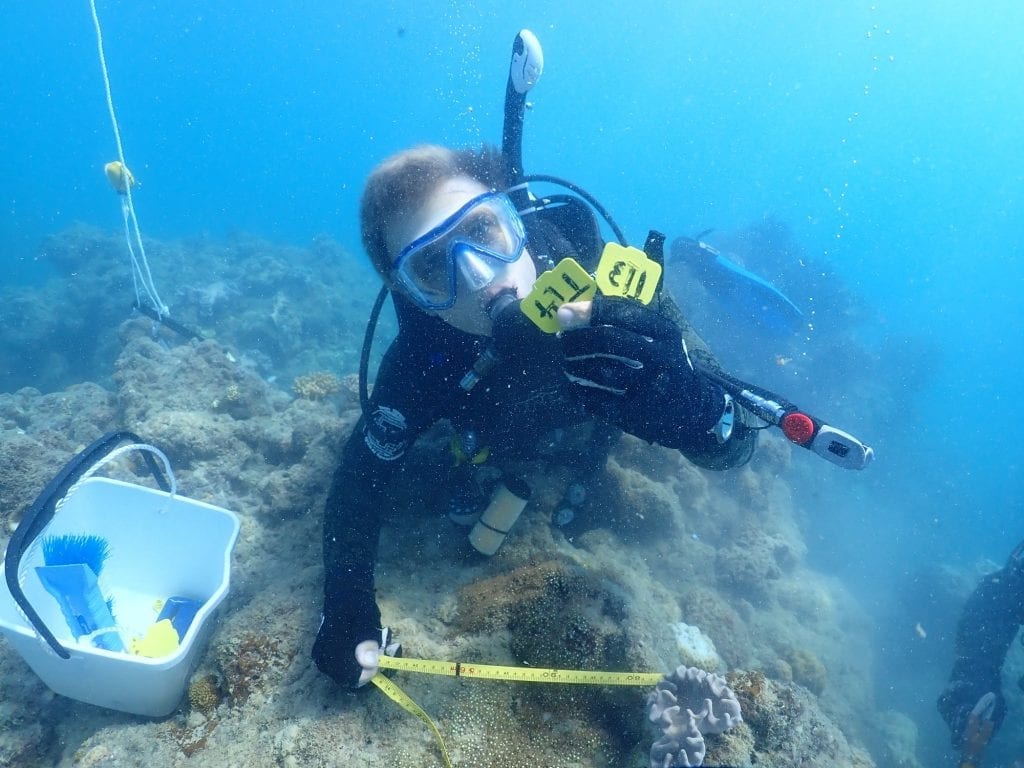
Other methods include, nailing the ropes onto the bedrock, or the use of Coralclips® to secure the fragments against the reef structure allowing the coral colonies to fasten naturally to the seabed.
Ocean Rafting is proud to have been involved in this project and aims to have a continued involvement through monitoring and future outplanting. If you would like to see the Restoration Project during your trip to the Whitsundays be sure to book our Northern Exposure tour where we often visit one of these locations.

